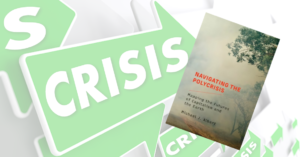The renowned Library of Alexandria, Egypt, was one of the largest libraries in the ancient world. It is generally thought to have been founded at the beginning of the third century BC during the reign of Ptolemy I Soter, or that of his son Ptolemy II. Legends have it that the library contained a copy of every book in the known world. Plutarch (AD 46-120) wrote that Caesar accidentally burned the library down during his visit to Alexandria in 48 BC. However, this version is not confirmed in contemporary accounts of the visit. Other accounts credit Patriarch Theophilus of Alexandria or Caliph Omar of Damascus with its destruction. It has been reasonably established that the library or parts of the collection were destroyed on several occasions, but the details of these various events remain a lively source of controversy based on inconclusive evidence. One thing is for certain, the world would have been a better place had the books and manuscripts contained on the library’s shelves been preserved. Preserving the world’s knowledge is exactly what a United Nations’ project intends to do [“U.N. Launches Library Of World’s Knowledge,” by Edward Cody, Washington Post, 21 April 2009]. Cody writes:
“A globe-spanning U.N. digital library seeking to display and explain the wealth of all human cultures has gone into operation on the Internet, serving up mankind’s accumulated knowledge in seven languages for students around the world. James H. Billington, the librarian of Congress who launched the project four years ago, said the ambition was to make available on an easy-to-navigate site, free for scholars and other curious people anywhere, a collection of primary documents and authoritative explanations from the planet’s leading libraries. The site (www.wdl.org) has put up the Japanese work that is considered the first novel in history, for instance, along with the Aztecs’ first mention of the Christ child in the New World and the works of ancient Arab scholars piercing the mysteries of algebra, each entry flanked by learned commentary.”
The site, sponsored by UNESCO, the U.N. Educational, Scientific and Cultural Organization, currently displays 1170 items from all corners of the earth. The library’s timeline begins some 10,000 years ago. Clearly, 1170 items hardly represents the world’s accumulated knowledge over that period, but they’re a start. The library is “designed to accommodate an unlimited number of such texts, charts and illustrations from as many countries and libraries as want to contribute.” The main target audience, according to Billington, is children. The World Digital Library took its inspiration from “the U.S. National Digital Library Program, which has been in operation at the Library of Congress since the mid-1990s. That program, at its American Memory site, has made available 15 million U.S. historical records, including recorded interviews with former slaves, the first moving pictures and the Declaration of Independence.” Young people have flocked to that site and Billington believes that children around the world will naturally be drawn to the World Digital Library as well. The site was developed with help from personnel at the Library of Congress in Washington and with technical assistance from the Bibliotheca Alexandrina in Egypt.
The World Digital Library is not the only project trying to preserve the world’s knowledge. In a post entitled Books Forever, I mention two other ongoing projects: Googles’ Library Project and the HathiTrust, a project that includes libraries from 12 Midwestern universities plus the 11 libraries of the University of California system. Google is also a supporter of the World Digital Library. Other contributors include Microsoft, the Qatar Foundation, King Abdullah University in Saudi Arabia and the Carnegie Corporation of New York.
“In addition to UNESCO and the Library of Congress, 26 other libraries and institutions in 19 countries have contributed to the project. Their offerings include rubbings of oracle bones from the National Library of China, delicate drawings of court life from the National Diet Library of Japan and a 13th-century ‘Devil’s Bible’ from the National Library of Sweden. Each is accompanied by a brief explanation of its content and significance. The documents have been scanned onto the site directly, in their original languages, but the explanations appear in all seven of the site’s official languages. … Billington acknowledged that national sensitivities could generate problems as the store of documents expands to include episodes in more recent history that some governments may want to hide or distort. But deliberate omissions may prove difficult to maintain, he said, because the site is open to contributions from all sides.”
The world is an amazing place and the more we learn about it and the people who inhabit its various lands the better off we’ll be. There will always be zealots who want to keep the world at bay and who want to isolate those around them from outside influences, but such individuals will never rule the day. Human beings have a hunger for knowledge. That hunger has motivated humans since they first learned to use tools, make fire, and build shelters. The World Digital Library is the kind of project that should make the developers of the Wide Wide Web proud. To learn more about how the World Wide Developed, read my post entitled Happy Birthday World Wide Web. The site is easy to use and interactive. You can call up documents and zoom in on them so that even the most minute details can be examined. For example, one can click on a handwritten copy of the Emancipation Proclamation signed by President Abraham Lincoln and William Seward, Lincoln’s Secretary of State. Because various institutions selected the items for cyber-storage, the collection is eclectic. The motives behind each selection is not always obvious, but one could spend a hours perusing the documents, maps, books, manuscripts, etc. that have been saved. Eventually, the World Digital Library will need a better way to search and retrieve documents as the collection grows from just over a thousand items to millions of items. It would also be more useful if there were 3-D renderings, not just pictures, of various structures through which users could take a virtual tour. This would help enhance the experience by bringing history and culture alive. For now, you’ll have to be content learning about “Romance and Love-Related Ceremonies” of the Naxi people of Yunnan Province, China — which, surprisingly, came from the Library of Congress in the United States and not from China. Of course, you’ll have to be able to read Naxi pictographs to understand the rituals — no translations are provided.




